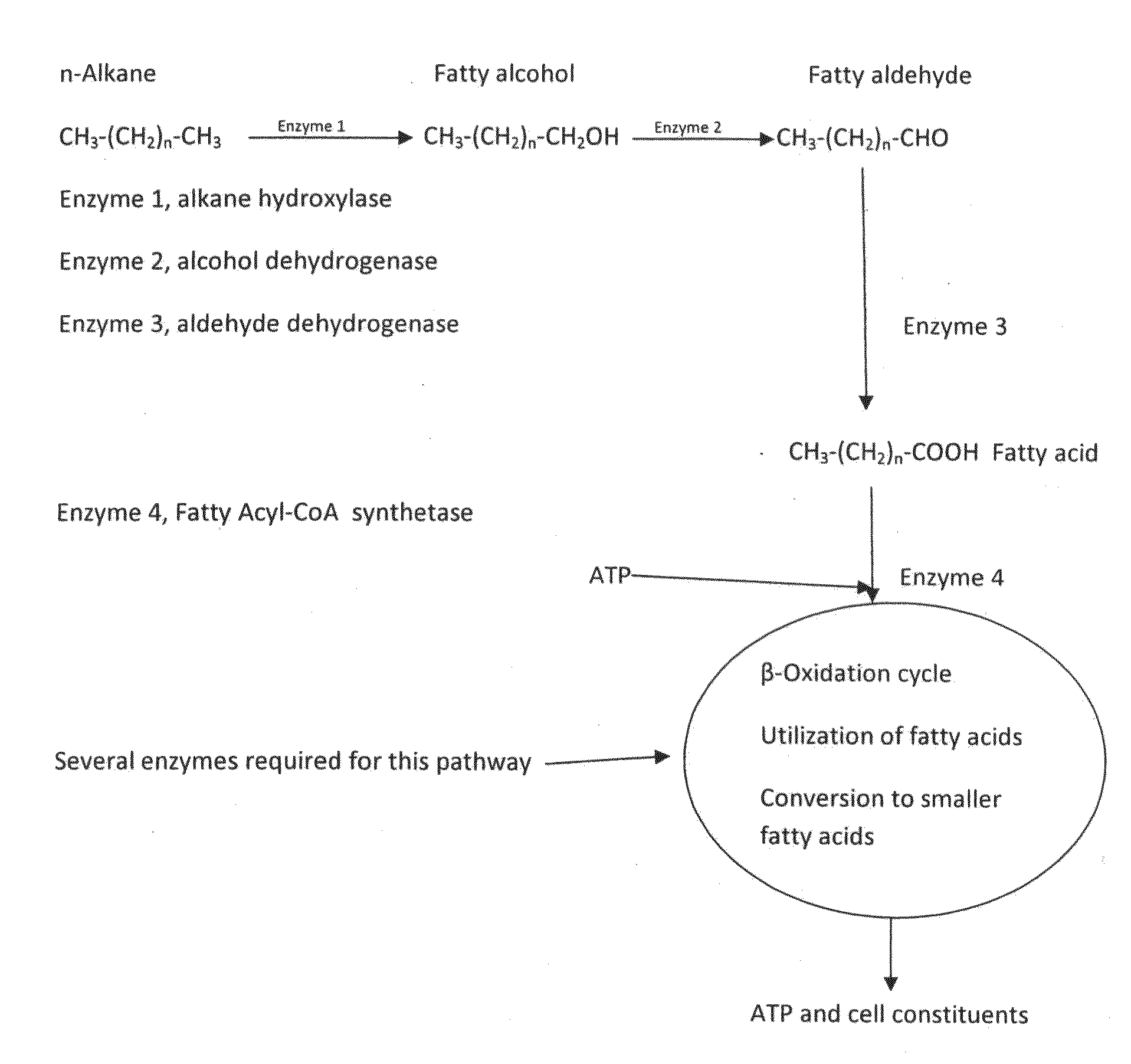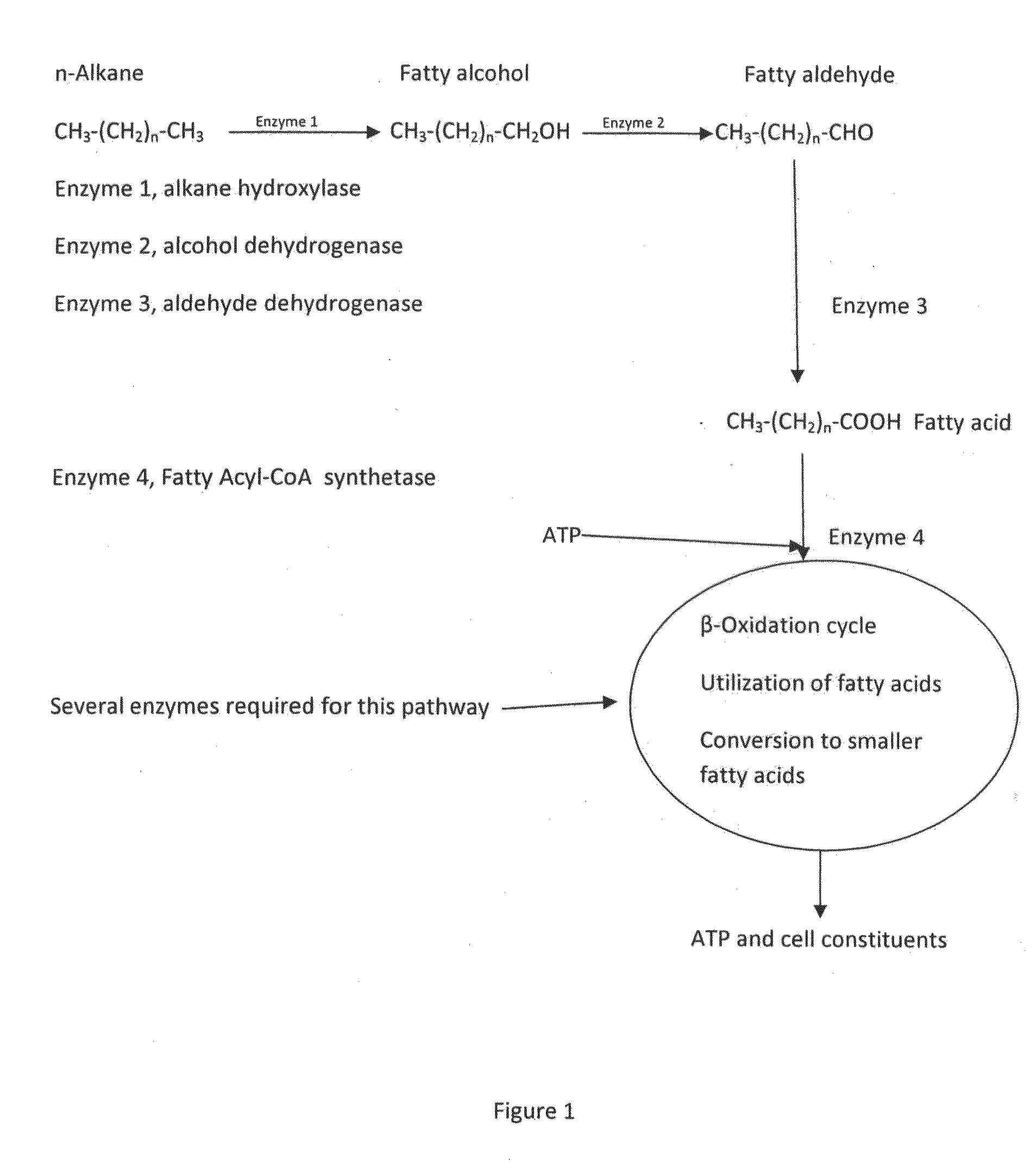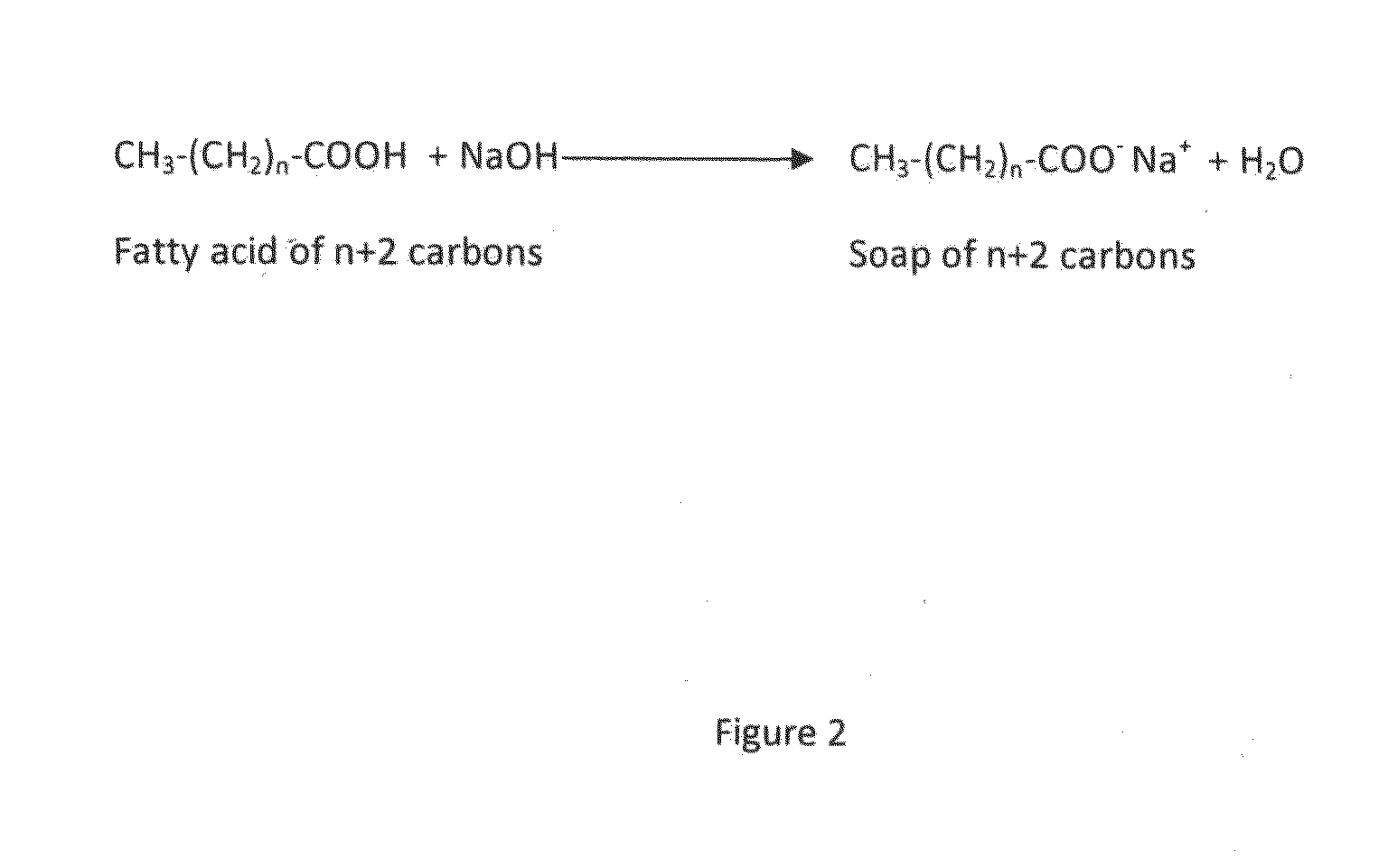Alkaline microbial enhanced oil recovery
a technology of enhanced oil and alkalinity, applied in the field of microbial enhanced oil recovery, can solve the problems of increasing the demand for more imported oil, a large amount of energy for heavy oil production, and inefficient recovery of petroleum oil, so as to enhance the recovery of petroleum oil and suppress the consumption of the lighter fraction of petroleum
- Summary
- Abstract
- Description
- Claims
- Application Information
AI Technical Summary
Benefits of technology
Problems solved by technology
Method used
Image
Examples
example 1
[0218]FIG. 4 shows the alignment of the amino acid sequences of the LadA long chain alkane monooxygenase (SEQ ID NO: 1) with the hypothetical protein Gen ID 9420269 HacjB3—12265 from Halalkalicoccus jeotgali B3 alkalitolerant halophiles (SEQ ID NO: 2) and with another hypothetical protein from the halophile, Halorubrum lacusprofundi (ATCC 49239) Gene ID 7401614 Hlac 0096 (SEQ ID NO: 3). The amino acid compositions for the three proteins are shown below.
[0219]Protein: GI: 134268638_G_thermodenitrificans
[0220]Length=440 amino acids
[0221]Molecular Weight=50463.66 Daltons
Amino AcidNumberMol %AlaA286.36CysC51.14AspD286.36GluE327.27PheF184.09GlyG337.50HisH204.55IleI265.91LysK317.05LeuL337.50MetM102.27AsnN204.55ProP163.64GlnQ102.27ArgR235.23SerS235.23ThrT194.32ValV327.27TrpW71.59TyrY265.91
[0222]Protein: GI: 299125497_H_jeotgali
[0223]Length=461 amino acids
[0224]Molecular Weight=51901.50 Daltons
Amino AcidNumberMol %AlaA449.54CysC30.65AspD398.46GluE4910.63PheF214.56GlyG357.59HisH132.82IleI143...
example 2
[0228]Isolation of Microbes from High pH and High Salt Site and Isolation from High pH and Low Salt Sites
[0229]Step 1: The Isolation of Microbes from High pH Environments
[0230]The isolation of microbes from high pH and high salt sites, or the isolation from high pH and low salt sites is a preferred method of obtaining host microorganism for an alkaline oil recovery process. Sites that have been contaminated with petroleum oil for a long time are most preferred because they may also contain microbes that can grow on a variety of hydrocarbons. Some oil wells contain water that is of high pH and has been at high pH for many years. Microbes from alkaline petroleum sites are also likely to be resistant to the toxic effects of petroleum and could be used for oil recovery or as host microorganisms for engineering metabolic pathways useful for oil recovery. The microorganisms isolated from these types of sites are also useful as a source of protein sequences of enzymes that are optimized fo...
example 3
Addition of Fatty Acids of Various Length Alkanes to Crude Petroleum Oil to Experimentally Determine the Emulsification of Oil at Alkaline pH
[0251]This test was done by mixing small amounts of carboxylic acids with a petroleum sample. The petroleum sample used was a sour oil from the Sleep formation of Pennsylvanian sandstone in Byron, Wyo. The carboxylic acids used in this test were; a 16 carbon (hexadecanoic) acid C16H32O2, an 8 carbon (octanoic) acid C8H16O2, a 4 carbon (butanoic) acid C4H8O2, a three carbon acid C3H6O2 and a 2 carbon acid C2H4O2. The amount of acid added was approximately enough to neutralize 1.0 mg of KOH per gram of oil or an acid number of about 1.0. The organic acid and oil were heated to about 50° C. for 30 minutes to dissolve the acid in the oil. The oil was then mixed with the sand at the ratio 3 ml (2.67 g) oil with 10 g sand. The sand was 30 mesh play sand from Home Depot. The oil and sand mix were packed into a small column and then eluted with the tes...
PUM
| Property | Measurement | Unit |
|---|---|---|
| pH | aaaaa | aaaaa |
| pH | aaaaa | aaaaa |
| pH | aaaaa | aaaaa |
Abstract
Description
Claims
Application Information
 Login to View More
Login to View More - R&D
- Intellectual Property
- Life Sciences
- Materials
- Tech Scout
- Unparalleled Data Quality
- Higher Quality Content
- 60% Fewer Hallucinations
Browse by: Latest US Patents, China's latest patents, Technical Efficacy Thesaurus, Application Domain, Technology Topic, Popular Technical Reports.
© 2025 PatSnap. All rights reserved.Legal|Privacy policy|Modern Slavery Act Transparency Statement|Sitemap|About US| Contact US: help@patsnap.com



